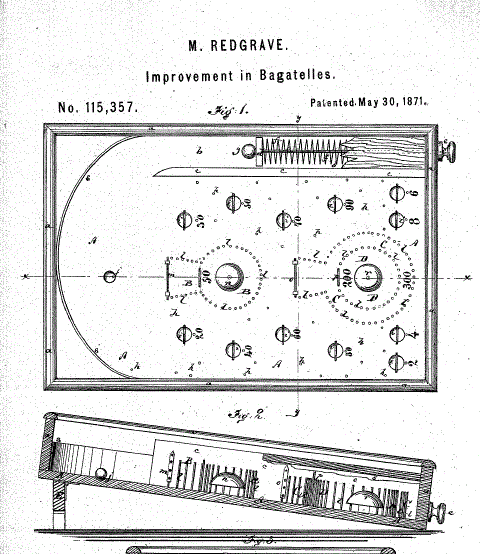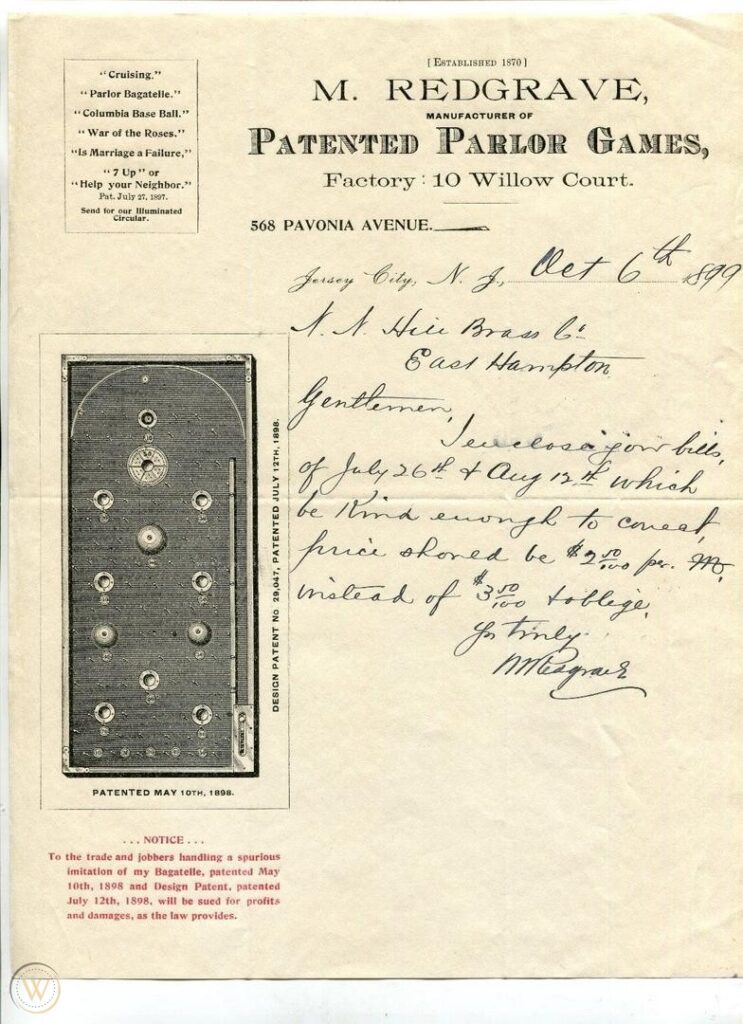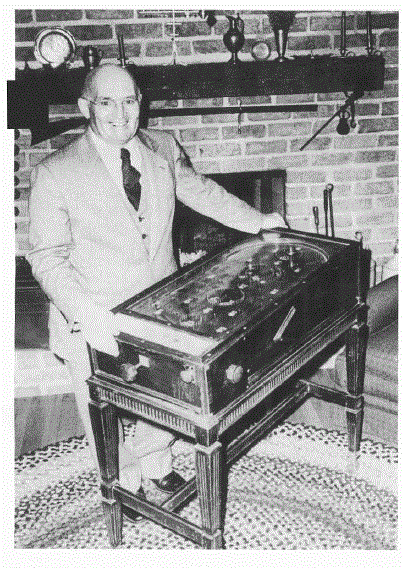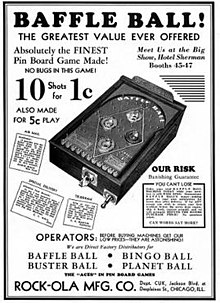If you want to go way, way back, pinball’s distant cousins are games involving balls – bocce, bowling, marbles and in particular the french game bagatelle – a game in which small balls are hit and then allowed to roll down a sloping board on which there are holes, each numbered with the score achieved if a ball goes into it, with pins acting as obstructions.
You might have made one of these as a child with a board, a bunch of nails, some rubber bands, and a glass marble..
But let’s jump ahead and define pinball machines with the following qualities, it’s a commercial game coin-operated amusement device, with a steel ball, obstacles, scoring, and most importantly a plunger to launch the ball.

The First Pinball Game?
In 1871 Montague Redgrave received the first US patent for a bagatelle machine titled Improvements in Bagatelles. Before Redgrave’s machine, a cue stick was used to move the ball. This new game used a plunger. Many consider this the first pinball game
The games were produced for home use and as a tavern game. These early games required the player to keep score manually and there was no automatic ball return, players had to manipulate the ball as one might set up a chessboard.

At first glance, the addition of the plunger to launch the ball doesn’t seem like a major improvement but what the plunger allows is glass to be placed on top of the game. isolating the player from the mechanics of the game, only accessible via a coin drop.
During this period there were similar bagatelle amusement devices in circulation mainly used as amusements at fairs and in taverns – bar owners would employ these “trade stimulators” as a way to keep patrons amused. The longer they stayed in the tavern playing games and wagering on the outcomes, the more drinks, and food they would order
In 1930, Arthur Paulin, a carpenter from Youngstown, Ohio built a modified bagatelle game for his daughter’s Christmas present. She liked it so much that he placed it in a local radio store where it received a lot of attention so they decided to add a coin slot.
It was a hit so they decided to build 10 more and went into business as Automatic Industries. Eventually, 27,000 Whiffle units had been sold by the end of 1931. This success attracted the attention of a lot of other amusement manufacturers and is considered the forefather of today’s pinball industry.

Baffle Ball and the launch of the pinball industry
The pinball empire built by David Gottlieb and the real start of the modern pinball industry was launched with a tabletop game called “Baffle Ball”.

“In 1930 the Bingo Novelty Company released Bingo, a bagatelle game created by Nathan Robin. The game was eventually offered to David Gottlieb, who improved the game and released it. While Bingo was a modest success, its true significance was that led to Gottlieb building his own machine which he dubbed Baffle Ball. The game went on to become one of the biggest hits of all time with over 50,000 units sold at $17.50 apiece.”
https://allincolorforaquarter.blogspot.com/2013/04/pinball-before-baffle-ball.html?lr=1

From this start of the pinball machine industry, Gottlieb would go on to lead the industry up to the late 1970s producing over 200 pinball machines. But they would never match the sales numbers of Baffle Ball.
For more on this subject:

